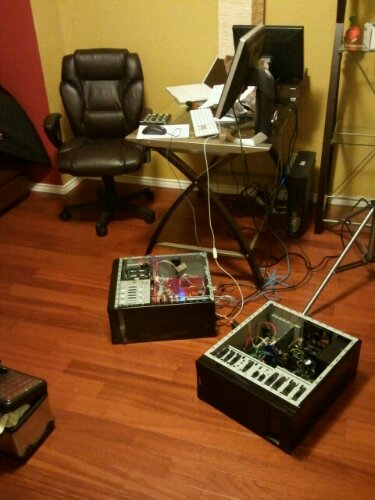I’d like to share some observations about inventions and innovations. Lots has been written about it, whole books and long essays. Having worked in the high tech industry myself for over ten years now I have my own observations. Many of today’s innovations in the technology field are more like linear extensions of once revolutionary ideas. This is not to discount the achievements of the newer developments, but just to describe the amount or pace of progression. If you think back to one of the early microprocessor designs like the i4004 you’ll find that the development complexity was fairly manageable for a small team of engineers (think 20). The challenge was the unknown market that such a design would find a usage for. It was a contracted design for a commercial calculator at that time, but engineers at Intel realized that it could be utilized in different markets as well.
Future generations of the processor introduced new instructions, even new concepts of memory management and many other improvements. Over multiple generations the design grew from 8080 over 80186, the 8-286, the 80386 to the 80486, where it evolved from the P54 Pentium to an out-of-order design called the P6, or Pentium Pro. This design improved over various generations to the Pentium II Processor, and the Pentium III Processor, spawning the consumer segment Celeron Processor line on its way. All this happened while the complexity rose from generation to generation by a magnitude (the Pentium II processor contains ~11 million logic transistors (this excludes the transistors for the L2 cache)). While the 8080 design team comprised of a handful of engineers, the P6 team consisted of more than 600 engineers at peak time. This poses a significant management challenge to bring such a complex design to market,
The point here is that during all these years of significant x86 or IA-32 architecture improvements, the complexity and along with it the engineering cost of such an innovation was growing exponentially. The recovery of this cost was only possible by stable or growing profit margins, along with growing markets. Over all these years Intel was enjoying a highly profitable x86 business.
From generation to generation the complexity of the micro-architecture grew significantly to provide a compelling solution to the PC market. This increase in complexity was significant and posed a significant market entry barrier for new competitors.
The next generations of P4 processors introduced a new level of complexity with their trace caches for instructions. The next generation Core 2 architecture introduced a level of high performance multi threading architecture and the i7 with a completely new bus interface amongst many other changes.
All these achievements required a magnitude higher development effort over their predecessors. These engineering challenges can only be met by large corporations that already have experience in managing large team, in many cases in a cross site setting.
Unless the market is disturbed by a non-linear development of some kind that is not predicted or embraced by established competitors (see: “The Innovator’s Dilemma”), this vicious cycle cannot be broken. Innovation is key to break out of this loop, although many failures will pave the way to break out. Innovation comes from the right idea at the right time. Should one of the two ingredients fall short, the whole endeavor is doomed. Many failed start-ups illustrate this painfully.
Examples of failures: video phone, tablet PC, net PC, 3D video, speech recognition, to name a few.
My point I’m trying to illustrate is that there a plenty of good ideas out there. But unless the timing is right for cost and market, you’ll be unable to build a business around it. Also, forecasting the future is actually rather simple as long as you’re assuming a linear progression of existing or known technologies. With disruptive technologies, these predictions become utterly useless. And nobody can predict if the time for a disruptive technology has come, unless someone tries.

